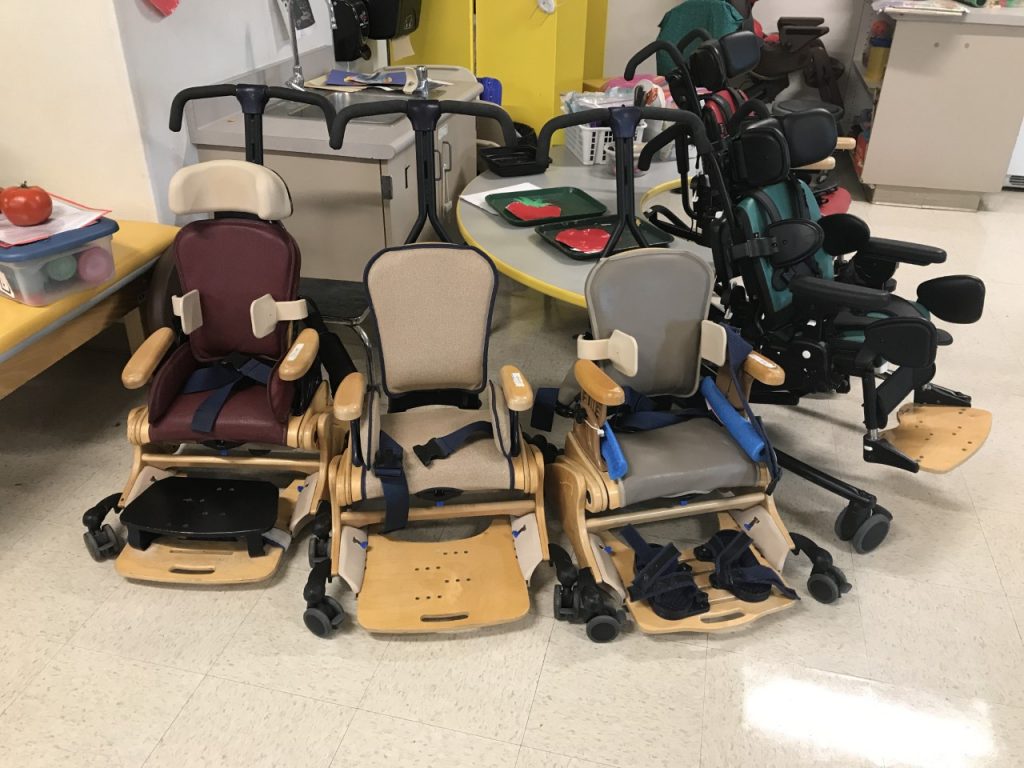Special Equipment
Special equipment can be used to position students for optimal participation during routine or planned activities.


Equipment can be used to allow students to practice motor skills while participating in the curriculum, or to reduce motoric demands to help students access their environment (Thomson, 2016, February 29).
Sidelyers, corner chairs, bolsters, and wedges can all be used with young children, and in appropriate settings for older students, to position students in a way that “breaks up” abnormal tone or reflex patterns.

Sidelyers can be used to:
- Break up abnormal reflexes, such as the tonic labyrinth reflex
- Break up abnormal tone, such as hypertonic flexor or extensor tone
- Position students for optimal participation
Corner chairs can be used to:
- Prevent abnormal reflexes, such as extensor thrust
- Break up abnormal tone, such as extensor tone in the legs
- Position students for optimal participation
Bolsters can be used to:
- “Break up” abnormal tone by positioning students in sidlying positions
- Prevent abnormal reflexes such as the tonic labyrinth reflex
- Position students to encourage weight bearing and head control
Wedges can be used to:
- Encourage weight bearing on the arms
- Practice head control and build strength in the neck
- Position students for optimal participation
- “Break up” abnormal tone and reflexes, such as tonic labyrinthine tone
- Promote bone growth in the arms and help to prevent osteoporosis
It is highly important that students with OI engage in weight-bearing activities frequently, in order to avoid secondary problems such as osteoporosis, muscle contractures, and poor circulation (Thomson, 2016, March 7).
Wedges can be used to help students bear weight on their arms, while standers and gait trainers allow students to bear weight on their legs.
Prone, supine, and dynamic standers can be used to:
- Position students in an upright position
- Bear weight, promote bone growth, and improve strength in the lower extremities
- Promote circulation in the lower extremities

There is evidence that social interactions between students with OI and their typical peers increase when children are in a standing position (Thomson, 2016, March 7).
Mobility devices can further be used to position students for optimal participation, as well as to assist students to walk and move independently or with assistance (Venn, Morganstern, & Dykes, 1978).
Gait trainers can be used to:
- Position students in an upright position
- Bear weight or bear partial weight and improve strength in the lower extremities
- Assist students in walking or moving independently or with assistance
- Practice taking reciprocal steps
- Practice head control and improve neck strength
- Help to prevent flexion contractors
- Help to prevent osteoporosis
- Position students for optimal participation
Wheelchairs and power wheelchairs can be used to:
- Assist students who cannot walk in moving independently
- Assist students who easily grow tired walking, or who are unsteady or unsafe walking short or long distances
- Position students for optimal participation
Providing mobility devices for students has shown to increase opportunities they have to participate in mobility activities, which had positive effects on play and socialization (Martin & Dischino, 2017).
Teachers are responsible for observing the student’s daily use and care of the ambulation equipment, informing parents and therapists when issues or additional needs arise, and for ordering special equipment that has been prescribed and fit by the occupational or physical therapists.
- In addition, teachers need to create classrooms that are free of obstacles so that students can use ambulation equipment without barriers.
- Lastly, teachers need to collaborate with the physical therapist and the family to create a program that ensures students are using mobility devices in the classroom, at home, and in broader community settings (1978).
Orthoses are braces that can be used to:
- Provide support
- Prevent or correct deformities
- Help to control spastic or involuntary movement
Orthotics are prescribed by physical or occupational therapists and designed by orthotists, though teachers must be able to correctly apply orthotics and identify when they are malfunctioning.
- Red spots, pressure sores, complaints of pain, or distress in non-verbal children can all be indications that orthotics are not functioning correctly.
